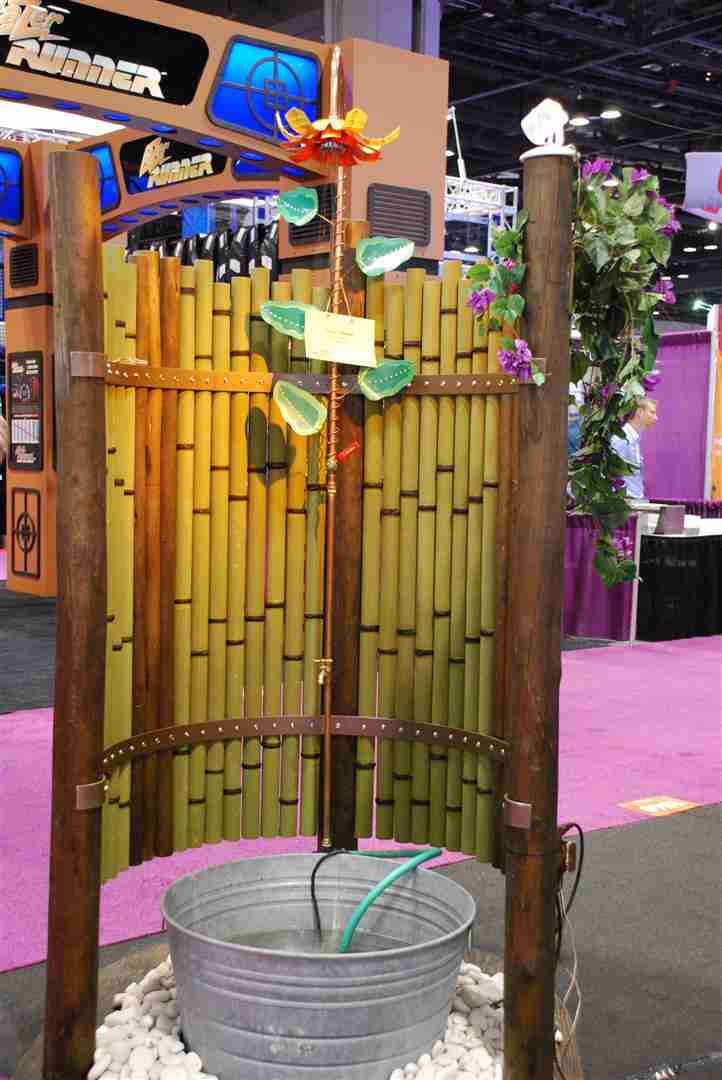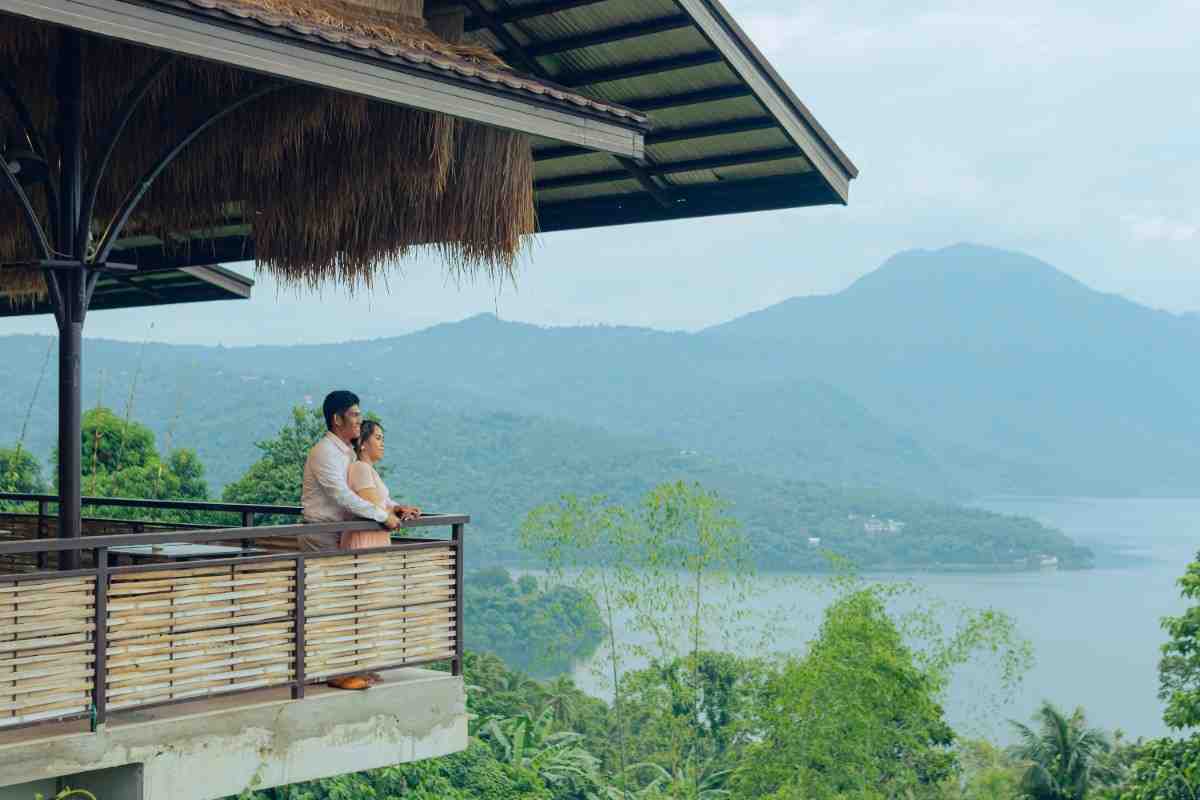
Tristan Ishtar
VP of Sales
Bamboo poles aren’t just panda food – they’re a great structural design element used in theme parks and resorts. It’s a material that really transports a visitor from the hustle and bustle of the outside world to a tropical paradise state of mind.
But bamboo poles aren’t your typical construction material, so you need to understand all aspects of using it in a project. This article delves into the critical factors to consider when selecting bamboo poles for specific themes, as highlighted by industry experts.
Understanding Bamboo Varieties
Bamboo, with its over 1,600 types, offers a vast array of options for construction and design. However, only five of them are structural, and the rest are only useful for cosmetic design, notes Tristan Ishtar, vice president of sales at amaZulu.
These structural varieties are crucial for ensuring stability and longevity in themed environments. Non-structural types may appear attractive but lack the necessary strength, leading to issues like splintering when drilled or nailed.
The choice of bamboo type greatly influences the outcome of a project, making it essential for architects to distinguish between the varieties for their specific needs.
Factors to Consider for Bamboo Selection
When choosing bamboo poles, several factors come into play:
- Wall Thickness: The thickness of the bamboo’s wall determines its strength and suitability for construction. Thinner-walled bamboos may not support structural requirements.
- Durability: Different species vary in their resistance to environmental factors. Ishtar notes the importance of choosing bamboo that won’t “just crack and split open for no particular reason.”
- Workability: It’s essential to select bamboo that can easily integrate with other construction materials. Bamboo that can be nailed, screwed, or drilled without fraying is preferable.
- Load-Bearing Capacity: Some bamboo species have ICC ratings for load-bearing applications, making them suitable for more demanding structural uses.
Understanding these factors ensures that the chosen bamboo not only meets aesthetic requirements but also performs well under various conditions.
Indoor vs. Outdoor Applications of Bamboo
The environment in which bamboo gets used significantly affects its longevity and suitability.
Indoor Applications
Bamboo works well in indoor settings, especially where it isn’t exposed to extreme elements. Ishtar suggests that for indoor use, “it’ll last if it’s climate-controlled.” This makes bamboo a great choice for interior theming, where its natural look enhances the aesthetic without the concern of environmental wear and tear.
Outdoor Applications
For outdoor applications, bamboo requires more consideration. Its natural composition makes it less suited for exposure to elements. “Without treatment, if it’s exposed to the elements like rain, it’s not going to do well,” Ishtar says. However, with proper sealing and placement, bamboo can still serve as an effective material for outdoor theming.
Preventative Measures for Outdoor Use
To extend the life of bamboo in outdoor applications:
- Seal the bamboo regularly with appropriate products.
- Ensure at least two inches of clearance from the ground to prevent water absorption.
- Avoid long-term exposure to snow or standing water.
These precautions help maximize bamboo’s lifespan and functionality in outdoor environments.
The Art of Working with Bamboo
Working with bamboo demands an understanding of its unique characteristics. The presence of nodes, or bumps along the bamboo pole, influences how it should be cut and used.
“Bamboo has those little bumps every 16 inches or so-called nodes,” Ishtar says. “Bamboo is hollow, but where those bumps are, it’s solid all the way through.”
When creating bamboo fencing, for instance, cutting at the node ensures that the top of the pole remains flat and doesn’t collect water, which can cause decay.
Additionally, some bamboo varieties, like the solid bamboo or iron bamboo, have thicker walls, making them suitable for more robust applications. These types provide greater strength and can handle more weight, making them ideal for load-bearing structures.
Examples of the Versatility of Bamboo in Design
When it comes to themed environments, bamboo serves as a dynamic and flexible material. Let’s consider hypothetical scenarios to illustrate its versatility:
- Tropical Resort: In a resort aiming to evoke a tropical paradise, architects used structural bamboo for the main framework of their cabanas. They chose a species known for its load-bearing capacity, creating a sturdy yet aesthetically pleasing structure.
- Safari Adventure Park: Here, designers utilized bamboo in creating immersive walkthrough exhibits. They selected bamboo with thicker walls for fencing, ensuring safety and longevity while maintaining the natural aesthetic.
- Urban Zen Garden: In a city-based wellness center, designers used bamboo for interior elements like partitions and ceiling accents. They opted for varieties suited to indoor conditions, enhancing the tranquil atmosphere with bamboo’s organic look.
These examples demonstrate bamboo’s adaptability, fulfilling both functional and decorative roles in various themed environments.
Getting Started With Bamboo in Theme Park Design
So where do you start with incorporating bamboo into the design of a theme park? After considering a few practical factors, it’s really up to an architect’s creativity.
Choosing the Right Species
The first step in using bamboo effectively involves selecting the right species. “It’s really important to have the right species for the application, so it’s best to do some research as well as talk to an expert about your specific project,” Ishtar says.
Consideration for Environment
Understanding the environment where bamboo will be used helps in making informed decisions. For outdoor applications in humid or rainy areas, species that can withstand moisture with appropriate treatment prove essential. Conversely, in dry climates, selecting bamboo that resists cracking becomes a priority.
Creative Integration
The success of bamboo in themed environments lies in how creatively one integrates it into the design. Whether as a structural element or a decorative feature, its natural form can significantly enhance the thematic authenticity of the space. Consulting with an expert can help you understand if your ideas on where to install bamboo are workable and cost-effective.
The Future of Bamboo in Themed Environments
Bamboo’s versatility, combined with a strong aesthetic appeal, makes it a valuable resource for architects and designers, particularly in themed environments. As awareness and knowledge about the various types of bamboo grow, so does its potential in creating immersive, durable, and eco-friendly designs.
Understanding the complexity and potential of bamboo in construction is essential for architects, designers, and builders looking to push the boundaries of themed design. Whether for a tropical resort or a zen garden, bamboo offers a unique blend of beauty, durability, and sustainability.
If you’re considering bamboo for your next project, amaZulu, Inc. can be your go-to resource. With a wide range of thatched roof products and services, amaZulu, Inc. has established itself as a leader in providing materials for theme parks, hospitality, and entertainment industries. Contact us today and let’s talk about your next project.

Tristan Ishtar
VP of Sales
With over 11 years at amaZulu, Tristan brings deep expertise in tropical building materials and a customer-focused approach. He serves as a trusted consultant for architects and designers, providing expert guidance without high-pressure sales.





